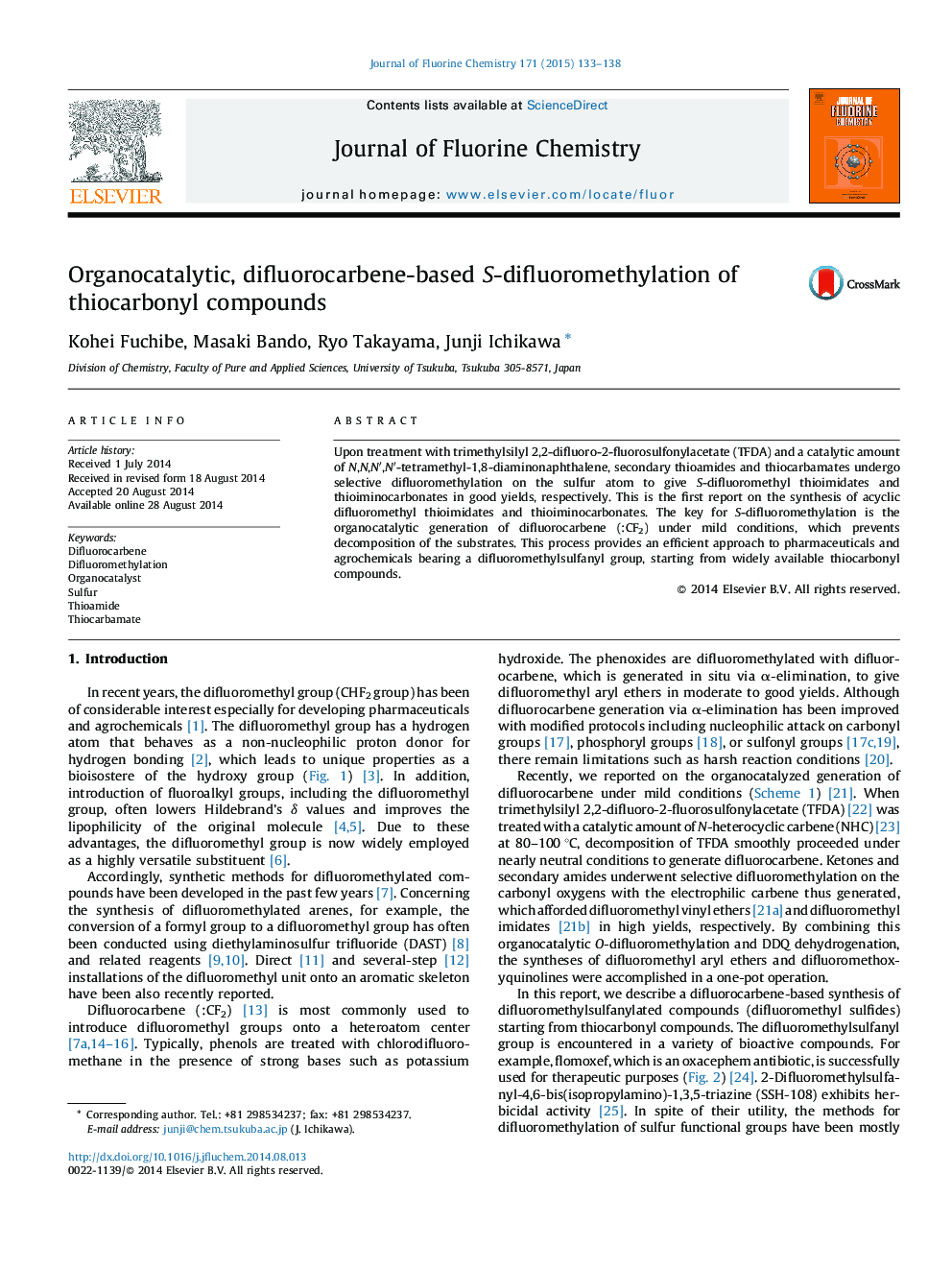| کد مقاله | کد نشریه | سال انتشار | مقاله انگلیسی | نسخه تمام متن |
|---|---|---|---|---|
| 1313613 | 1499329 | 2015 | 6 صفحه PDF | دانلود رایگان |

• Upon treatment with TFDA and proton sponge, thioamides and thiocarbamates undergo S-selective difluoromethylation.
• S-Difluoromethyl thioimidates and thioiminocarbonates were obtained in good yields.
• The key for S-difluoromethylation is the organocatalytic generation of difluorocarbene (:CF2) under mild conditions.
• This is an efficient approach to pharmaceuticals and agrochemicals bearing a difluoromethylsulfanyl group.
Upon treatment with trimethylsilyl 2,2-difluoro-2-fluorosulfonylacetate (TFDA) and a catalytic amount of N,N,N′,N′-tetramethyl-1,8-diaminonaphthalene, secondary thioamides and thiocarbamates undergo selective difluoromethylation on the sulfur atom to give S-difluoromethyl thioimidates and thioiminocarbonates in good yields, respectively. This is the first report on the synthesis of acyclic difluoromethyl thioimidates and thioiminocarbonates. The key for S-difluoromethylation is the organocatalytic generation of difluorocarbene (:CF2) under mild conditions, which prevents decomposition of the substrates. This process provides an efficient approach to pharmaceuticals and agrochemicals bearing a difluoromethylsulfanyl group, starting from widely available thiocarbonyl compounds.
Upon treatment with trimethylsilyl 2,2-difluoro-2-fluorosulfonylacetate (TFDA) and a catalytic amount of N,N,N′,N′-tetramethyl-1,8-diaminonaphthalene, secondary thioamides and thiocarbamates undergo selective difluoromethylation on the sulfur atom to give S-difluoromethyl thioimidates and thioiminocarbonates in good yields, respectively. The key for S-difluoromethylation is the organocatalytic generation of difluorocarbene (:CF2) under mild conditions. This process provides an efficient approach to pharmaceuticals and agrochemicals bearing a difluoromethylsulfanyl group, starting from widely available thiocarbonyl compounds.Figure optionsDownload as PowerPoint slide
Journal: Journal of Fluorine Chemistry - Volume 171, March 2015, Pages 133–138